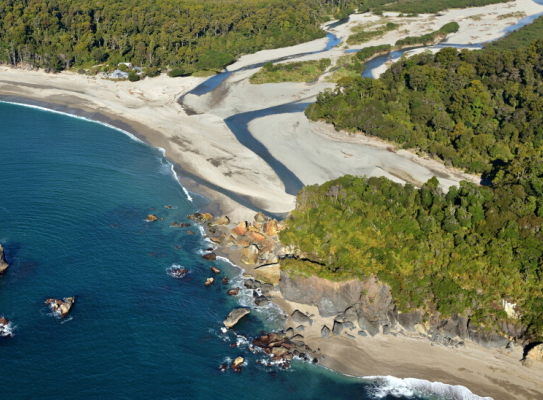
Environment and ClimateTe Taiao me te Āhuarangi

Our research focuses on the sustainable management of the environment and effective adaptation to climate change.
Climate change is a global reality
We must improve our ability to predict how our climate may change and identify its thresholds and tipping points. We must adapt to unavoidable change as our oceans warm, pressure on freshwater resources increases, sea-level rise affects coastal communities and infrastructure and extreme weather events become more frequent and intense.
A changing world
Humans have changed our planet and its systems. Environmental issues, such as human-induced climate change, are real and serious. If we don’t act now, the future for humanity looks bleak.
We need science to provide context and to evaluate natural variability and baselines so that we can attribute and address human-driven change. There is little point trying to mitigate climate change driven by natural variability – attribution is key where possible.
Our research is key to our future. What we do now to understand and mitigate the impact we are having on the world’s environment and climate will benefit our communities now and for generations to come.
A make a difference moment – Dr. Richard Levy on what Antarctica is telling us about our climate transcript
Our science aims
- Ensure sustainable cities and communities
- Support affordable and clean, green energy
- Support climate action
- Increase the availability and security of clean water
- Support economic growth
- Enable industry, innovation and safe infrastructure
- Inform conservation and sustainable use of marine resources
- Protect, restore and promote sustainable use of terrestrial ecosystems
Our challenges
- We seek to understand the changing balance of ice and water on the planet
- Our research furthers our knowledge of the changing carbon cycle
- We support research into assessing and ensuring clean groundwater
The Rise and Fall of Urban Groundwater
Groundwater is a precious resource, but it's also under threat as sea levels rise.

-
Our tohu (icon)

Our tohu (icon) – named Rauru – represents Te Ao Hurihuri, our ever-changing world. Adaptation over time, survival, change and self-management are central to the Climate and Adaptation theme. In this tohu, built from a rauru, opposing but connected spirals evolve as they get closer to the centre, shown in the pītau (the bumps on the white spirals). The spirals change shape and form as they come together.





